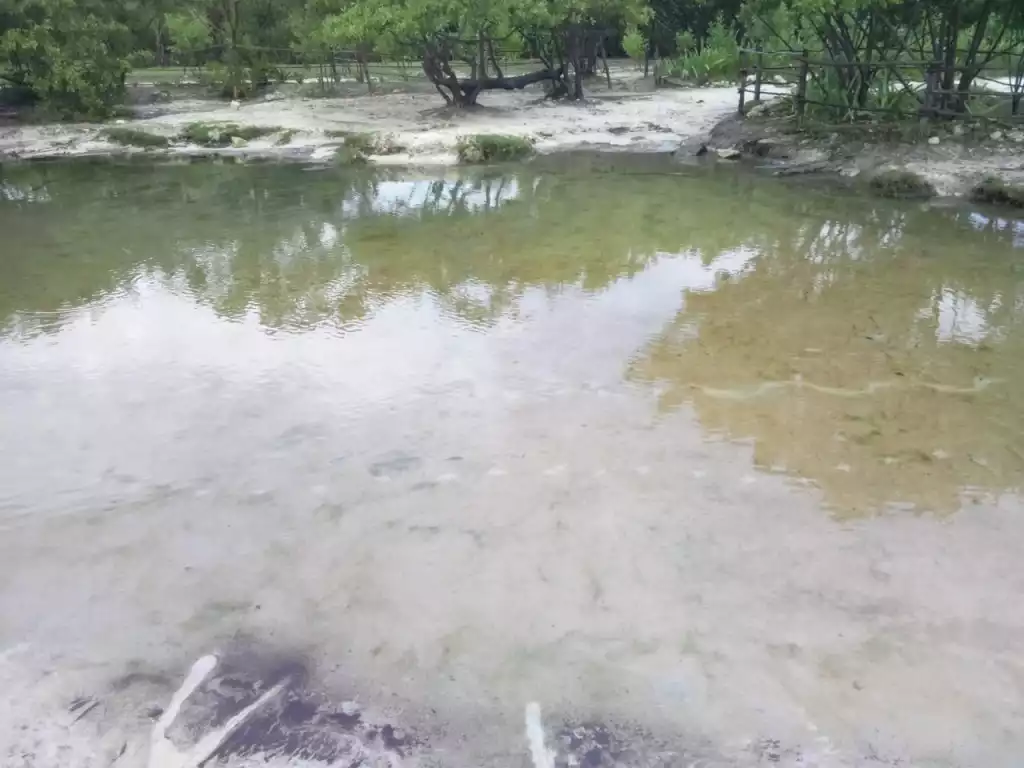Playa del Carmen — Pollution in various cenotes along the coast continues to generate concern due to the risk it poses to public health and the ecosystems connected to the region's reefs. This area is documented to have at least 47 interconnected freshwater springs, which facilitates the spread of contaminants.
A recent case corresponds to the cenote known as "Cenote Sagrado de Punta Esmeralda," where odors similar to those of sanitary sewage have been reported, particularly when the sea level drops.
This situation has been documented by environmental activist Carlos Jiménez, who has conducted tours of the green strip between the Luis Donaldo Colosio Murrieta neighborhood and the Federal Maritime Terrestrial Zone. The activist stated that he has recorded evidence of pollution and has requested that sampling be carried out to determine the water quality in both the cenote and the coastal area.
He indicated that, so far, there are no recent studies that would allow for an understanding of the exact level of impact. Wastewater discharges from nearby settlements could be filtering into the underground water bodies and subsequently reaching the sea.
This natural connection between cenotes, aquifers, and the reef system increases the ecosystem's vulnerability to any source of pollution. Potential effects include damage to biodiversity, harm to endemic species, the proliferation of harmful algae, as well as risks to the human population, including gastrointestinal and respiratory diseases.
Furthermore, the contamination of the cenotes can compromise the potable water supply, as many of these bodies are entry points to the network of aquifers that supply the region.
The activist emphasized the importance of conducting constant monitoring and laboratory analysis to evaluate water quality and prevent greater risks, both for the ecosystems and for the population that depends on the area's water tables.
Discover more from Riviera Maya News & Events
Subscribe to get the latest posts sent to your email.
